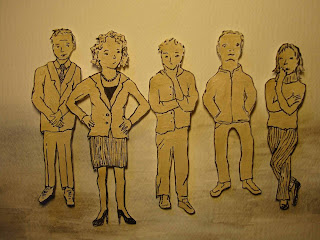 When you communicate face-to-face with an audience, such as when you’re delivering business presentations, you’re sending three different types of signals from which your audience interprets your meaning.
When you communicate face-to-face with an audience, such as when you’re delivering business presentations, you’re sending three different types of signals from which your audience interprets your meaning. The first of these are your verbal signals. These are the actual words you choose. You can clarify your meaning by choosing words that are familiar to the audiences you’re addressing. If you’re an engineer, for example, certain technical terms you’re familiar with may be understood by other engineers, but maybe not by everyone else.
The second type of signals you send are vocal signals. These are not the words you say, but rather, the way you say them. Your audience will add additional meaning to your words depending on the tone, speed and volume of your speech. You may notice that by modulating these speech characteristics, you can say the same words many different ways and, as a result, send many different messages.
The third type of signals you send are visual signals. Visual signals, or your body language, are what your audience sees as you speak. Hand gestures are the most obvious forms of body language, but your audience can read meaning from even more subtle types of body language than this. Posture, or the way you stand, for example, sends a powerful message to your audience about your confidence level. Even slight expressions that flash across your face in just a glance can add extra meaning to the words you say for your audience.
 Business presentations are largely made up of spoken and written words, so obviously, the words you choose to deliver your presentation will be important for your audience’s comprehension. However, research suggests that your visual signals also send meaningful messages to your audience that influence how they feel about what you have to say. In fact, your visual signals may account for about half of the overall communicative impact that your presentation has on your audience.
Business presentations are largely made up of spoken and written words, so obviously, the words you choose to deliver your presentation will be important for your audience’s comprehension. However, research suggests that your visual signals also send meaningful messages to your audience that influence how they feel about what you have to say. In fact, your visual signals may account for about half of the overall communicative impact that your presentation has on your audience.This being true, your business presentations can be more effective if visual signals become a part of your planning. In addition to planning what the audience will hear, also plan what they will see. Attractive slides can make your presentation visually memorable, but what you do with your body language will influence how your audience interprets your message as you deliver it.
In other words, it’s not just what you say nor how you say it, but what you do as you say it that makes a difference.





No comments:
Post a Comment